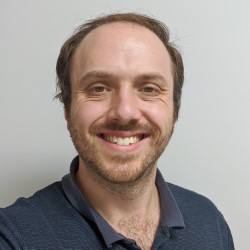Earth’s environment is undergoing rapid change as greenhouse gases warm the planet.

Carbon-dioxide’s global and regional sources and sinks
-
-
-
Wollongong Campus
Building 20.5 and Online
Dr Michael Bertolacci, from the Centre for Environmental Informatics, NIASRA, will give a presentation (“A shifting carbon cycle: Hunting for changes in ecosystems' emission and absorption of CO2”) during Global Climate Change Week (GCCW) 2022 (A Joint NIASRA-SEALS Seminar)
Time: 13.30 pm - 14.30 pm, Friday 14 October 2022
Location: Building 20, Room 5, and via Zoom*
*The Zoom link will be advertised before the event. Please contact karin_karr@uow.edu.au to register and receive the Zoom link by e-mail.
Abstract: The rising atmospheric concentration of carbon dioxide (CO2) due to human emissions is the leading cause of climate change. Huge quantities of CO2 also cycle between the atmosphere and natural ecosystems, and this is a good thing since land ecosystems and the ocean together absorb nearly half of what humans emit. However, the natural exchanges (or fluxes) of CO2 are changing, and finding out “how much” and “where” is difficult because of the enormous geographical areas involved. Fluxes are transported from Earth’s surface around the globe by winds, resulting in atmospheric CO2 concentrations that can be measured from the ground and in the air, in particular by space-based satellites covering large parts of the globe. In this talk, I will discuss how we used these data to hunt for changes to Earth’s ecosystems' CO2 fluxes using a method we developed called WOMBAT (WOllongong Methodology for Bayesian Assimilation of Trace-gases). We found rapid changes in many ecosystems, including the tropics, which transitioned from a net source of CO2 to a net sink between 2015 and 2020.
Michael Bertolacci

Biography: Dr Michael Bertolacci is a Research Fellow in statistics at the University of Wollongong. His research interests lie at the intersection of statistics, the environment, and problems involving lots of data, lots of computation, or both. Before coming to UOW, he was a PhD student at the University of Western Australia, where he used statistical methods to study Australian rainfall.